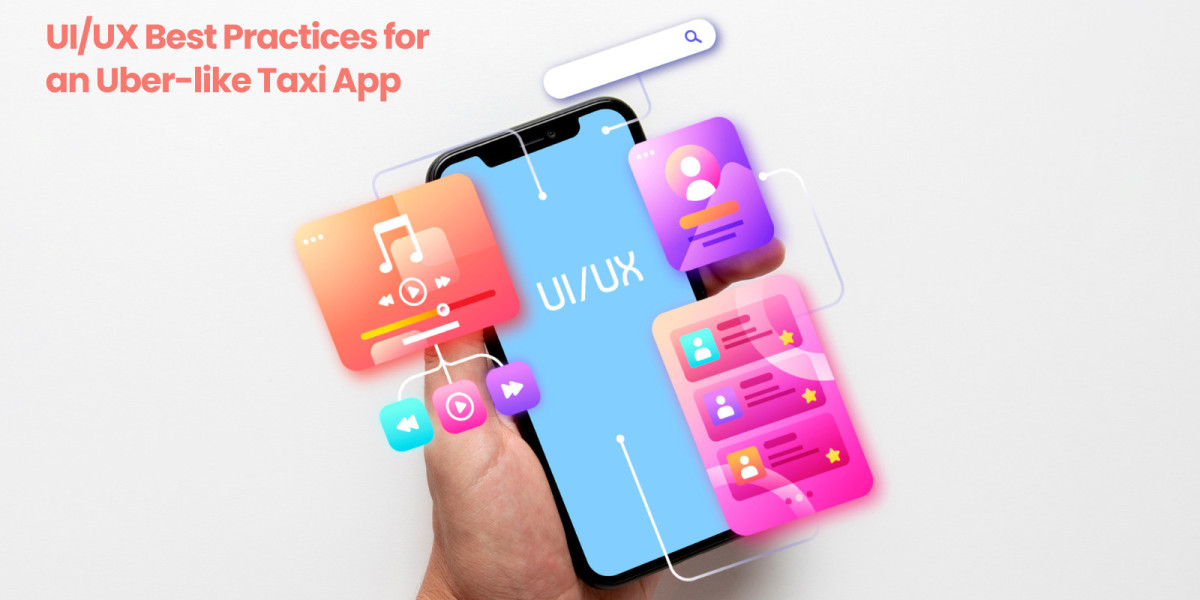The ride-hailing industry has grown exponentially over the past decade, with apps like Uber, Lyft, and Bolt leading the market. A key factor behind their success is an exceptional user interface (UI) and user experience (UX) design. A well-designed taxi app must be fast, intuitive, and reliable to keep users engaged and satisfied.
Poor UX can lead to high bounce rates, negative reviews, and lost revenue. On the other hand, a seamless experience ensures higher retention, better ratings, and increased customer loyalty.
1. User Research & Understanding Needs
Before designing, you must understand your users. Ride-hailing apps serve two main user groups:
Riders – Need quick, affordable, and safe transportation.
Drivers – Want efficient navigation, fair earnings, and minimal downtime.
Key Pain Points to Address:
Long wait times – Users abandon apps if they wait too long.
Unclear pricing – Hidden fees frustrate riders.
Poor navigation – Drivers struggle with inefficient routes.
Payment issues – Failed transactions lead to distrust.
Research Methods:
User interviews – Direct feedback from riders and drivers.
Competitor analysis – Study Uber, Lyft, and regional apps.
Surveys & analytics – Identify drop-off points in the booking flow.
Takeaway: A deep understanding of user needs ensures your app solves real problems.
2. Simplified Onboarding Process
A complicated sign-up process kills conversions. Follow these best practices:
Minimize Steps
Allow social login (Google, Facebook, Apple) or phone number verification.
Avoid lengthy forms—only ask for essential details (name, phone, payment method).
Guided Tutorials
Use interactive tooltips to explain key features (e.g., how to book a ride).
Highlight safety features (SOS button, ride-sharing).
Permission Requests
Explain why you need location access ("To find rides near you").
Allow users to skip notifications initially (ask again later).
Example: Uber’s onboarding is just three screens—phone verification, location access, and payment setup. Visit: https://zipprr.com/uber-clone/
3. Intuitive Ride Booking Flow
The booking process should be fast and effortless.
A. Map & Location Selection
Auto-detect location but allow manual input.
Smart address suggestions (predictive search like Google Maps).
Save frequent destinations (home, work) for quick access.
B. Vehicle Selection
Display clear icons for ride types (economy, premium, bike).
Show real-time pricing and ETAs for each option.
C. Fare Estimation
Provide upfront pricing (no surprises).
Explain surge pricing ("Demand is high—fares may increase").
Pro Tip: Use progress indicators (e.g., "Step 1 of 3") to reduce anxiety.
4. Real-Time Tracking & Notifications
Users want visibility and control over their ride.
Live Driver Tracking
Show driver location, route, and ETA in real time.
Allow riders to call/text the driver directly from the app.
Smart Notifications
Push/SMS alerts for:
Driver assigned
Driver arriving
Ride completed
Payment receipt
Safety Features
Share ride details with trusted contacts.
Emergency button (connects to local authorities).
Example: Uber’s "Share Status" lets riders send live trip details via WhatsApp.
5. Seamless Payment Experience
A smooth payment process boosts trust and repeat usage.
Multiple Payment Options
Credit/debit cards
Digital wallets (Apple Pay, Google Pay)
Cash (in regions where digital payments are less common)
Automatic Payments
Enable one-tap rides (no need to re-enter payment details).
Send digital receipts with fare breakdown.
Transparent Pricing
Show toll fees, taxes, and surge pricing upfront.
Allow fare disputes in case of route deviations.
Pro Tip: Use tokenization (saved payment tokens) for faster checkouts.
6. Driver App UX Considerations
A great driver experience ensures more available rides.
Efficient Navigation
Turn-by-turn directions (Google Maps/Apple Maps integration).
Traffic alerts to optimize routes.
Earnings & Incentives
Show daily/weekly earnings clearly.
Highlight bonuses and surge pricing opportunities.
Easy Ride Management
Simple accept/reject ride requests.
Pause new requests when taking a break.
Example: Uber’s driver app includes heat maps showing high-demand zones.
7. Accessibility & Inclusivity
Your app should work for everyone, including:
Visually impaired users (voice commands, high-contrast UI).
Non-native speakers (multilingual support).
Elderly users (larger buttons, simple navigation).
Key Features:
Voice search ("Book a ride to Central Park").
Dark mode for nighttime use.
Text-to-speech for fare summaries.
8. Post-Ride Engagement
Keep users coming back with smart follow-ups.
Rating & Feedback
Let riders rate driver, vehicle, and overall experience.
Allow drivers to rate riders (to flag problematic users).
Loyalty Programs
Discounts for frequent riders.
Referral bonuses ("Invite a friend, get $10 off").
Personalized Offers
Suggest discounted rides based on past trips.
Send promotions during peak hours.
Example: Uber’s "Uber Rewards" program offers points for every dollar spent.
9. Performance & Speed Optimization
A slow app frustrates users and increases uninstalls.
Fast Loading Times
Optimize map rendering (pre-load nearby drivers).
Use caching for frequently accessed data (saved addresses).
Offline Functionality
Allow users to view past trips without internet.
Enable saved ride requests (auto-submit when online).
Battery Efficiency
Reduce GPS and background data usage.
Optimize animation and graphics for smoother performance.
10. Testing & Iteration
Great UX is never static. Continuously test and improve.
A/B Testing
Experiment with different button colors, placements, and CTAs.
Test fare estimation displays (e.g., "From $10" vs. exact pricing).
User Feedback
Monitor app store reviews and support tickets.
Conduct usability tests with real users.
Analytics Tracking
Track drop-off points (where users abandon bookings).
Measure booking completion rates to identify bottlenecks.
Conclusion
A well-designed Uber-like taxi app must prioritize speed, simplicity, and reliability. By optimizing onboarding, real-time tracking, seamless payments, and driver UX, you enhance user satisfaction. Continuous testing and iteration ensure long-term success. Focus on solving real pain points—whether for riders or drivers—to build a trusted, high-performing ride-hailing platform that stands out in the competitive market.








